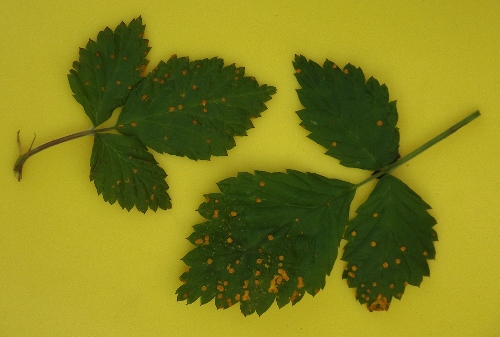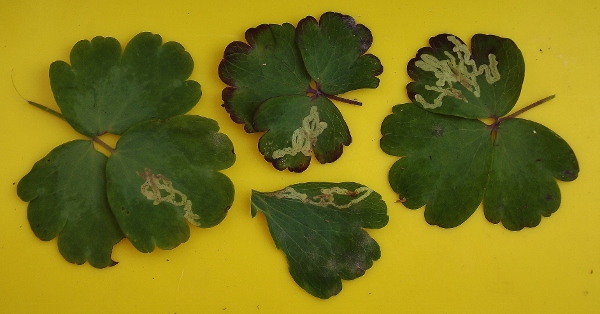
 Cardboard or Paper Tubes – Prefabricated cardboard tubes are readily available and Mason Bees will happily nest in them. Try to use 6″ long tubes as the shorter lengths will only result in fewer females being laid, and it is the females that do all the pollinating. You can also roll your own tubes out of ordinary brown
Cardboard or Paper Tubes – Prefabricated cardboard tubes are readily available and Mason Bees will happily nest in them. Try to use 6″ long tubes as the shorter lengths will only result in fewer females being laid, and it is the females that do all the pollinating. You can also roll your own tubes out of ordinary brown  kraft paper worked around a wooden dowel. These will need to have an inner diameter of 1/4″ to 3/8″ and be stopped at one end. Either can be slipped into drilled wooden blocks or bundled and housed in any waterproof structure (if the paper or cardboard gets wet, mold will become an issue) that the bees can access. The sides of the tubes should not be readily accessible, as parasitic wasps may get through. Both cardboard and paper tubes are disposable and will need to be carefully cut open to harvest the cocoons for cleaning.
kraft paper worked around a wooden dowel. These will need to have an inner diameter of 1/4″ to 3/8″ and be stopped at one end. Either can be slipped into drilled wooden blocks or bundled and housed in any waterproof structure (if the paper or cardboard gets wet, mold will become an issue) that the bees can access. The sides of the tubes should not be readily accessible, as parasitic wasps may get through. Both cardboard and paper tubes are disposable and will need to be carefully cut open to harvest the cocoons for cleaning.
Table Saw-Cut or Routered Wooden 
 Trays – Stackable wooden trays can be made from finished 1 x 4-6″ dimension lumber (not cedar or treated wood) cut to 6.5-7″ lengths and channeled using a 5/16″ router bit or a table saw fitted with a dado blade – both should be cut to a 6″ depth with only one open side.
Trays – Stackable wooden trays can be made from finished 1 x 4-6″ dimension lumber (not cedar or treated wood) cut to 6.5-7″ lengths and channeled using a 5/16″ router bit or a table saw fitted with a dado blade – both should be cut to a 6″ depth with only one open side.  Saw-cut trays are more square-edged and it does take the bees more time and mud to seal them, but they still seem quite happy to use these. There needs to be a tight fit between wooden trays to prevent mites from migrating from one to another – this can be achieved by taping or using a threaded rod system to hold them securely in place. Wooden trays are easy to access for cocoon harvesting and can be cleaned, although they may absorb moisture and mold can become an issue – which is why they need to be housed in a waterproof shelter or under the protection of an eave.
Saw-cut trays are more square-edged and it does take the bees more time and mud to seal them, but they still seem quite happy to use these. There needs to be a tight fit between wooden trays to prevent mites from migrating from one to another – this can be achieved by taping or using a threaded rod system to hold them securely in place. Wooden trays are easy to access for cocoon harvesting and can be cleaned, although they may absorb moisture and mold can become an issue – which is why they need to be housed in a waterproof shelter or under the protection of an eave.
Stackable Plastic Trays – The most common 
 plastic components currently available in coastal BC are the Beediverse Quicklock Trays. Each tray has 6 rounded grooves that when locked together with another form nesting tunnels. These are composed of a corn-based plastic (more than 75%) with a rough interior finish similar to wood. The trays can be
plastic components currently available in coastal BC are the Beediverse Quicklock Trays. Each tray has 6 rounded grooves that when locked together with another form nesting tunnels. These are composed of a corn-based plastic (more than 75%) with a rough interior finish similar to wood. The trays can be  stacked to any desired height and are best secured together using electrician’s tape. They also come in multiple colours which can help the Mason Bees to find their tunnels more quickly when they return from foraging. These trays can be purchased with prefabrictaed wood shelters, some of which are fitted with plastic predator guards and emergence chambers. They are also easy to access and clean.
stacked to any desired height and are best secured together using electrician’s tape. They also come in multiple colours which can help the Mason Bees to find their tunnels more quickly when they return from foraging. These trays can be purchased with prefabrictaed wood shelters, some of which are fitted with plastic predator guards and emergence chambers. They are also easy to access and clean.
Drilled Wooden Blocks – Although this system was commonly used when Mason Bee production first became popular, the inability to access the cocoons or nesting hole for cleaning has lead to severe mite infestations. Both lumber (not cedar or aromatic wood) or seasoned natural wood blocks can be used, with the holes being drilled with a 1/4″ to 3/8″ bit to a depth of about 6″. You can also drill slightly larger holes to accomodate cardboard or paper tube liners to minimize the mite problem, although they will need some protection from the rain (such as the sheet metal roof shown). Drilled wooden blocks cannot be cleaned and should be considered disposable unless inserts are used.
used when Mason Bee production first became popular, the inability to access the cocoons or nesting hole for cleaning has lead to severe mite infestations. Both lumber (not cedar or aromatic wood) or seasoned natural wood blocks can be used, with the holes being drilled with a 1/4″ to 3/8″ bit to a depth of about 6″. You can also drill slightly larger holes to accomodate cardboard or paper tube liners to minimize the mite problem, although they will need some protection from the rain (such as the sheet metal roof shown). Drilled wooden blocks cannot be cleaned and should be considered disposable unless inserts are used.
Natural Reeds – These are the materials that Mason Bees  naturally use in the wild and may include the hollow stems of bamboo, grasses, shrubs and trees. While imitating nature may seem like the best thing to do, many of these reeds have irregular sizes and they are difficult (if not impossible) to open for cleaning. These can be bundled and housed like cardboard tubes, but should be considered disposable.
naturally use in the wild and may include the hollow stems of bamboo, grasses, shrubs and trees. While imitating nature may seem like the best thing to do, many of these reeds have irregular sizes and they are difficult (if not impossible) to open for cleaning. These can be bundled and housed like cardboard tubes, but should be considered disposable.
 Mason Bee Viewing Boxes – These come in
Mason Bee Viewing Boxes – These come in  various configurations but all have a clear plastic wall so that the entire length of the tunnels and cocoons can be seen at a casual glance. They are great educational tools for children or even people considering Mason Bee pollination for their own gardens. Most are single wooden tray configurations fitted with a hinged lid or housed in a box – all of which can be cleaned.
various configurations but all have a clear plastic wall so that the entire length of the tunnels and cocoons can be seen at a casual glance. They are great educational tools for children or even people considering Mason Bee pollination for their own gardens. Most are single wooden tray configurations fitted with a hinged lid or housed in a box – all of which can be cleaned.












































